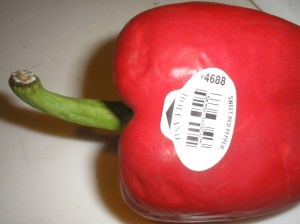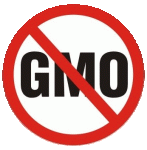When you get to know a farmer, you get the opportunity to ask him or her all sorts of questions about how the fruits and vegetables you are eating were grown. But what if you don’t get to meet your produce’s maker? How do you know that that nice-looking broccoli under the “Organic Broccoli” sign really is organic? What if it had been grown with pesticides? What if it was really genetically modified broccoli?
The answer to all these questions lies the code–the code in that little sticker stuck on your produce.
Eight years ago, produce marketing groups from around the globe got together to create the International Federation for Produce Standards. It took over the task of standardizing the price look-up codes (or PLUs) that supermarkets had begun introducing a decade earlier. The IFPS has assigned more than 1,300 price codes, and once you know how the codes are created, you can tell how the produce was grown.
Here’s how. All codes begin with four digits: 4805 would be for a vine-ripe tomato. If the tomato in question is organic, the IFPS tacks a 9 in front, or 94805. If somebody had monkeyed with the tomato’s genes, its sticker would have to begin with an 8, which is used to designate genetically engineered produce. (You can pause your reading here to look for and toss any vine-ripe tomatoes in your fridge bearing the sticker 84805.)
Alas, this system isn’t perfect. The IFPS is concerned with accurate pricing, not policing. It wants its members to be able to ring up the right price for organic apples every time, and not send them by the cash register as cheaper conventional fruit. But I can’t find any evidence that it has the time or resources to nab a wholesaler who is tagging pesticided produce as organic or failing to flag GMO garbage as such.
In the end, as Michael Pollan has said, you have to shake the hand that feeds you.
Filed under: Grist For The Mill, Uncategorized | Tagged: Genetically Engineered Crops, Genetically Modified Crops, International Federal for Produce Standards, Organic Food, PLU Code | 1 Comment »






 The gospel of high-tech, genetically modified (GM) crops is not sounding quite so sweet in the land of the converted.
The gospel of high-tech, genetically modified (GM) crops is not sounding quite so sweet in the land of the converted.